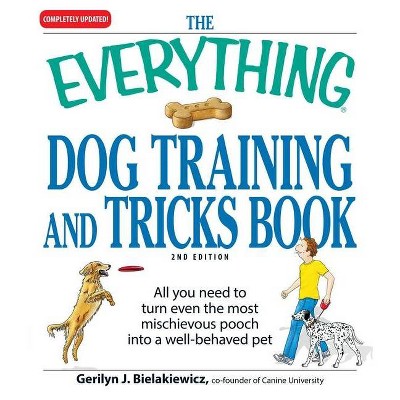About this item
Highlights
- As the first botanical history of World War II, Plants Go to War examines military history from the perspective of plant science.
- About the Author: Judith Sumner is a botanist and author with particular interest in the historical uses of plants.
- 366 Pages
- History, Military
Description
Book Synopsis
As the first botanical history of World War II, Plants Go to War examines military history from the perspective of plant science. From victory gardens to drugs, timber, rubber, and fibers, plants supplied materials with key roles in victory. Vegetables provided the wartime diet both in North America and Europe, where vitamin-rich carrots, cabbages, and potatoes nourished millions. Chicle and cacao provided the chewing gum and chocolate bars in military rations. In England and Germany, herbs replaced pharmaceutical drugs; feverbark was in demand to treat malaria, and penicillin culture used a growth medium made from corn. Rubber was needed for gas masks and barrage balloons, while cotton and hemp provided clothing, canvas, and rope. Timber was used to manufacture Mosquito bombers, and wood gasification and coal replaced petroleum in European vehicles. Lebensraum, the Nazi desire for agricultural land, drove Germans eastward; troops weaponized conifers with shell bursts that caused splintering. Ironically, the Nazis condemned non-native plants, but adopted useful Asian soybeans and Mediterranean herbs. Jungle warfare and camouflage required botanical knowledge, and survival manuals detailed edible plants on Pacific islands. Botanical gardens relocated valuable specimens to safe areas, and while remote locations provided opportunities for field botany, Trees surviving in Hiroshima and Nagasaki live as a symbol of rebirth after vast destruction.
Review Quotes
"Plants Go to War is a reminder of how mankind still depends on the natural world-being only a harvest away from global starvation. ...Sumner garners often obscure facts."-BSBI News
"excellent...Sumner wrote the book in an easily digestible manner...a fantastic and pleasurable read...recommended...Sumner has written this book in a manner that sparks a newfound appreciation for plants"-Yale Journal of Biology and Medicine
"[Sumner's] research is exhaustive...authoritative and informative...destined to be a classic source on this topic"-The Herb Society of America
"A unique blend of botanical and military history... Plants Go to War is an original and meticulous study that is as informed and informative as it is accessibly organized and reader friendly in presentation...recommended"-Midwest Book Review
"Copious endnotes...extensive bibliography...meticulously indexed...a must for libraries and research institutions of all kinds"-Journal of the Botanical Research Institute of Texas
"In all our years of experience with books about Wold War II, never have we seen one quite like this...a big, serious study of the subject"-Stone & Stone
"In this impressively researched exploration, esteemed ethnobotanist Sumner takes a scholarly yet totally accessible approach to the myriad ways plant materials were critical to both Allied and Axis war efforts. With balanced attention to domestic sacrifices and ingenuity, Sumner's astonishing discoveries make this a fascinating read for botany buffs and those steeped in military history."-Booklist
"Interesting facts abound in this descriptive work...profoundly engrossing...impressive breadth and depth...an incredible amount of information...easy to find memorable facts to add to your repertoire... Every page reveals more details, photos and eye-catching botanical illustrations discussing the relationship between humans, plants and a war that changed the world. If you're intrigued by ethnobotany during World War II, among both the Axis and the Allies, or getting non-botanists into botany, this is the book for you."-Economic Botany
"Sumner's book is the first to bring together such a wide variety of subjects related to botanical plants and their uses...richly illustrated...Sumner has written important book, which will serve as a reference work for scholars working on food and botanical history, both during WWII and beyond. Combining her immense knowledge of plant sciences with history, she meticulously explains how plants affected all aspects of the war, even those not commonly associated with botany. As such, she has succeeded in her mission 'to write an encyclopedic synthesis of civilian and military plant uses'-and misuses-during a defining period in modern history."-Technology and Culture
"The comprehensive volume takes the story far beyond the victory gardens that perhaps immediately come to mind when discussing WWII and plants. Although this topic is addressed, the book spans across the European and Pacific theaters, touching Allies and Axis civilians and combatants."-The Times of Israel
"The first botanical history of World War II"-Southern Naturalist
"With the publication of [Sumner's] wonderful new book, many more people will have the opportunity to learn about the extraordinary role plants played in history's most widespread conflict. ...exceptionally well researched...Sumner has produced a classic work of ethnobotanical history. ... The wealth of information is so well presented that the reader will likely visit its pages again and again."-Herbal Gram
About the Author
Judith Sumner is a botanist and author with particular interest in the historical uses of plants. She is a frequent lecturer for audiences of all kinds and has taught for many years at colleges and botanical gardens. She lives in Worcester, Massachusetts.











